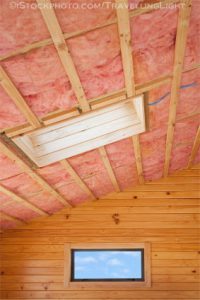By properly insulating your home, you make your home more comfortable while reducing your heating and cooling costs. Insulation is extremely effective because it provides resistance to heat flow. The more heat flow resistance your insulation provides, the lower your cooling and heating costs. Proper insulation is equally important in the summer as it is in the winter. For best energy efficiency, your home needs to be properly insulated from the foundation to its roof. There are several different types of insulation including rigid foam board, spray foam insulation, fiberglass batt, and cellulose. Each insulation type has unique properties making it suitable for some areas and less effective in others. Typically older homes have significantly less insulation than homes built today. Newer homes can also benefit from adding insulation which often pays for itself over time through energy savings.
Areas where our Virginia Home Repair Green Handyman Energy Experts can evaluate your insulation and its effectiveness:
- Foundations
- Basements
- Crawl Spaces
- Floors Above Unheated Garages
- Exterior Walls
- Electrical Outlets
- Ducts
- Attic Spaces
Common questions about insulation include how much insulation is needed in an attic or exterior walls
, what type of insulation should be used and where, and will adding more insulation lower my energy bills. Virginia Home Repair Green Handyman Energy Experts can tell you what kind of insulation is needed, how much, and where.
If you do not own an Energy Star water heater, consider wrapping your water heater with an insulation blanket. To determine if your current water heater is not energy efficient, carefully touch the outside of the water heater. If it is warm, you are losing heat to the surrounding air, which is costing you money. By simply installing an insulation blanket around your water heater, you can minimize this heat loss and lower your water heating costs. You can save even more by turning down your water heater 20 degrees from most manufacturer factory settings of 140 to 120 degrees. For every 10 degrees Fahrenheit you lower your water temperature, you can save up to 5% in water heating costs.









